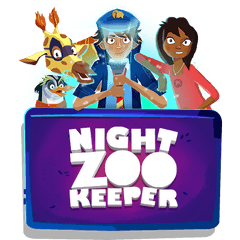Creative Writing for Kids: A Step-By-Step Guide to Writing a Story


Creative writing can be a real positive force for children’s lives and development, but how does a child get started with creative writing? We’ve outlined some simple steps on how your child can write a story and enjoy themselves in the process!
What is creative writing?
Creative writing is an expressive form of writing that allows children to explore their thoughts, ideas, and emotions in an imaginative way. Unlike academic or factual writing, creative writing encourages children to use their imagination to invent characters, settings, and plots, fostering a love for storytelling and self-expression.
In creative writing, children have the freedom to write stories, poems, letters, and even scripts for their own movies. It's an opportunity for them to unleash their creativity, experiment with language, and develop their unique voice as writers. Through this writing style, children learn to think critically, problem-solve, and communicate effectively, all while having fun and letting their imagination run wild.
Encouraging creative writing at home or as part of homeschooling not only helps children develop their writing skills but also nurtures their imagination and confidence.
Getting started
Your child may not be quite ready to start, and that’s normal - writing can be daunting!
Instead of jumping straight in, you can ease them in with activities like free writing. This is where they can write whatever falls onto the page without worrying about structure or style. It's great for getting those ideas flowing and bringing thoughts to life before they start writing stories.
If your child is a reluctant writer, you can try different methods that don’t actively require them to put pen to paper, but are linked to creativity and storytelling. These include drawing, picking out new children’s books from the local library, telling stories out loud, or dedicating time to read your child’s favorite books as a family. Generally, reading lays the foundation for your child to be able to create their own stories, improving their narrative writing skills by exposing them to different techniques, genres, and styles. The more your child reads, the easier it will be for them to start writing.
Step 1: Invent a character
Creating a character is a great starting point for your child to write their own story.
This character can be whatever your child wants them to be. They can be a human, an animal, a mystical creature, or something completely made-up! Once they have a general idea of what they want this character to be, they can brainstorm different plot points, which will further inform the characters traits, behaviours, and role in the story.
Here are some questions your child should be able to answer about their character:
- What is going on in this character’s life?
- Do they have a problem that they need to fix?
- Who are they interacting with in this story?
- How do they feel about other characters, and about the issue at hand?
A story normally relies on one character to be the hero, and on another to be the villain. The villain is typically portrayed as a negative character who introduces a problem (the antagonist), and the hero is a positive character who solves the problems (the protagonist). Once your child creates their main character, they should establish their role within the story. Are they writing from the perspective of the hero, or would they prefer to give the villain of the story a voice?
From there, they can create side characters! These are typically parents, siblings, and friends of the main character, but can also be total strangers. If your child is stuck on how to build their first character, they can use writing prompts to make it a little easier. Try this prompt:
Prompt: Create a character that is half dog, and half elephant and call it a Doggophant! What does a Doggophant like to eat?

Step 2: Set the scene
The next step in your child's creative writing process is to choose where it takes place. They should also decide the genre of their story, as some settings may not work for some specific genres (for example, a sunny beach would be an unusual pairing with a moody mystery). Some popular genres to get imaginative include mystery, science fiction, fantasy, adventure, and fairy tale.
This story's setting could be a real location, such as London, Paris, or New York, or a fictional location, like an enchanted forest or an underwater kingdom.
A helpful way to start brainstorming is to ask your child about places they've been to, seen on TV, or read about in stories. This is a chance for them to imagine how their story would look like in different settings, and will help them decide on the genre they'd like to go for too.
If they're struggling to get their creativity flowing, why not try drawing the setting first, and then describing it afterwards?
Using sensory details to bring settings to life
Encourage your child to use their five senses when describing their story's setting. This will make the world they create more vivid and immersive for readers. Here's a fun prompt to practice:
Prompt: Imagine you're in a magical candy forest. What do you see? What sounds do you hear? What does the air smell like? Can you taste anything? What different textures can you feel? Describe your candy forest using all five senses!
By incorporating sensory details, your child's writing will become more descriptive and engaging, allowing readers to feel as if they're right there in the story.
Prompt (continued): Where does a Doggophant usually live? Is it a magical Night Zoo? What does it smell, sound, and feel like?
Step 3: Establish a storyline
Before starting to plan the plot, your child should understand the basic structure of a story. All good stories have a beginning, a middle, and an end.
Beginning
The beginning serves as a way to introduce characters, set the scene, and show the "calm before the storm”. This happens before a conflict is introduced.
Middle
The middle of a story is where most of the action takes place. This is where your child should introduce the main problem, and the main character’s journey of trying to solve it.
End
Finally, the ending or conclusion of the story is where, normally, the conflict is resolved. This can change depending on how your child wants to end their story!
Creating exciting plot twists
To make their stories more engaging, encourage your child to include unexpected turns of events or plot twists. A plot twist is a surprise that changes the direction of the story and keeps readers guessing. Here's a fun way to practice:
Prompt: Imagine your main character finds a mysterious key. What does it unlock? Come up with three surprising possibilities that could change your story's direction!
By adding plot twists, your child's stories will become more exciting and unpredictable, keeping readers on the edge of their seats.
Prompt (continued): Doggophants love when people visit the Night Zoo, but a new character named Lord Nulth is trying to steal all of the creativity in the Zoo! Does Lord Nulth sound like a nice person? Why would he want to steal creativity? How will Doggophant and other animals stop him? Can you think of a surprising twist that could happen in this story?
Step 4: Put pen to paper and start writing!
Now that all the planning is done, let's get writing! As your child starts to write, they'll probably make changes and come up with new story ideas - this is normal and an integral part of the creative process. Changes are welcome and encouraged - the best writers keep editing their stories and create lots of drafts to get it just right!
Brainstorming unique story ideas
Before diving into writing, encourage your child to brainstorm creative and original story ideas. This will help them develop more compelling narratives and improve their ability to think outside the box. Try this exercise:
Prompt: Combine two unlikely things or characters (like we did with the Doggophant). What adventures might they have? For example, what if a teddy bear became best friends with a race car?
By practicing creative thinking, your child will come up with more unique and interesting story concepts, making their writing stand out.
It's important that you offer your support throughout this process, especially if your child is a reluctant writer. While giving them space to concentrate, you can check-in every once in a while, offering help if they encounter any hurdles. Your role mirrors that of a writing prompt, providing your child with initial ideas and nudging them to develop their story further and help them to feel safe and supported. This collaborative approach ensures their story unfolds organically, making the blank page a canvas for unlimited story possibilities!
Exploring different points of view
Introduce your child to various perspectives in writing:
- First person: The story is told from the "I" perspective.
- Third person: The narrator tells the story about "he," "she," or "they."
- Omniscient: The narrator knows everything about all characters.
Understanding different points of view helps children see how perspective can change a story and engage readers in unique ways.
Activity: Encourage your child to rewrite a well-known story from a different character's perspective. This exercise helps practice expressing different perspectives and enhances creativity.
Step 5: Keep it up - don't stop!
One of the best things about creative writing is that it enables children to express themselves and grow in confidence with every story they craft. It pushes children to believe in the phrase "I can", as they embark on different writing exercises without the fear of failing or being held by the "what if's". As your child starts their journey through the exciting world of writing, it's important to guide them in the right direction. Encourage them to not overthink and just write whatever comes to mind at first.
For reluctant writers, setting small, attainable targets can make the process less overwhelming and more exciting. Avoid setting strict word counts or time limits, as these can add pressure and take the fun out of the writing experience. You can try different techniques such as visual story boards, or starting as bullet points and turning them into paragraphs. There is no one set way to get the creative process going - the whole point of creativity is to experiment and think outside the box!
It's important to remember that progress isn't linear, and that every child is unique. If they need to, you can allow your child to build their story gradually, creating a more fluid project that enables them to work when inspiration strikes. Once they finish their first story, you'll probably see a change in their attitude, and a new motivation to write a different piece.
Creative writing can be a rewarding experience for you and your child. Make sure you give them positive encouragement, and to soak in the experience of reading the story once it has been completed. They'll have created something one-of-a-kind, and it will give you an exciting look into their imagination, and create a memory you can treasure forever.
Step 6: Try Night Zookeeper

Still having trouble getting your child motivated to write?
Night Zookeeper makes writing fantastically fun by turning learning into a game, keeping children engaged and excited to learn! We cover all styles of writing, and boost children's writing skills using an array of different activities, including writing lessons, short story prompts, and challenges.
Our program also offers a unique opportunity for children to share their writing and get feedback on their work. Here's how it works:
- Children can share their stories within the Night Zookeeper community.
- They receive personalized feedback on all their writing from our team of tutors.
- Kids can also give and receive feedback from other children on the program, fostering a collaborative learning environment.
This process of sharing and receiving feedback helps children develop a sense of accomplishment, learn to refine their work, improve their writing skills, and gain confidence in their abilities as writers.
Sign up today and get a free 7-day trial!
More creative writing activities
Follow us on social media


Make Reading & Writing Fantastically Fun!
- Award-winning reading & writing program for kids
- Improves spelling, grammar, punctuation & vocabulary
- Over 1,000 different learning games and activities


How To Get Your Child To Love Writing


“My child hates writing.” What do I do?


8 Fantastically Fun Writing Games


